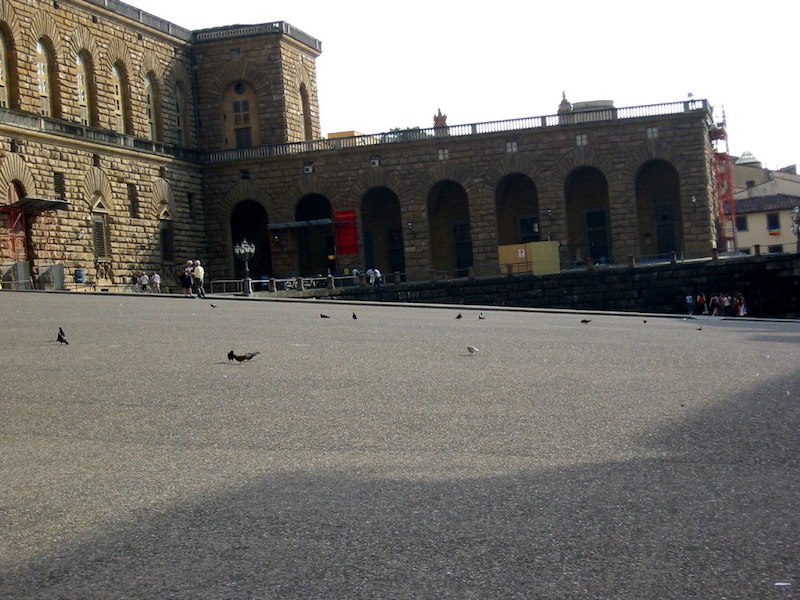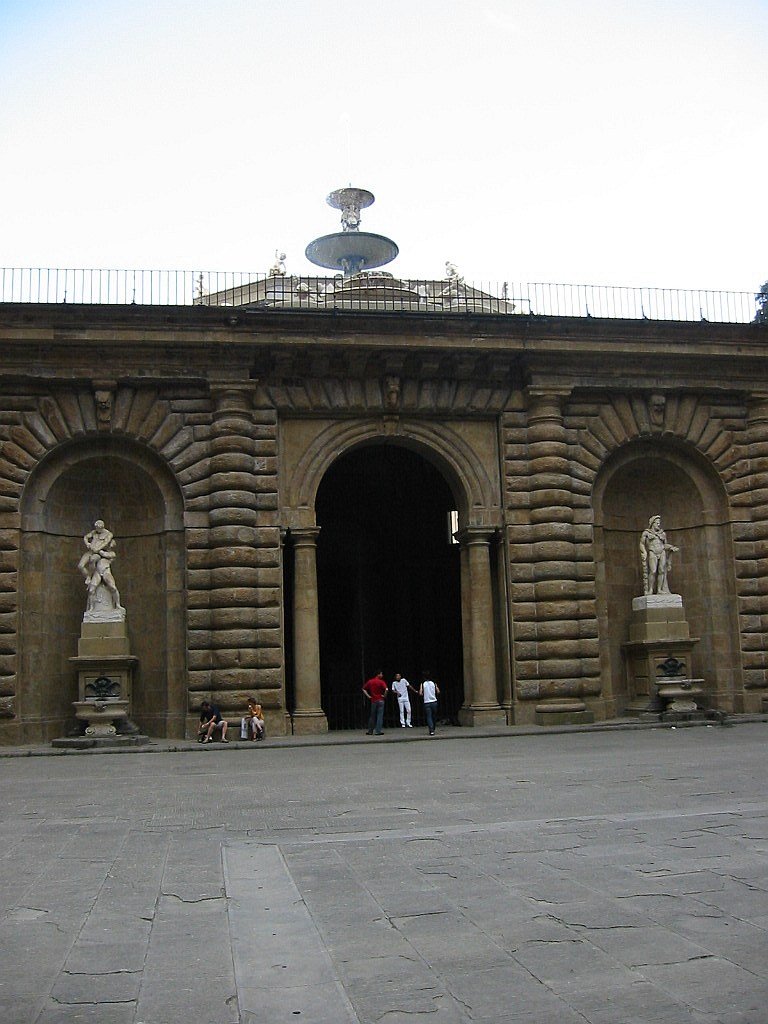

The Piazza dei Pitti and the Palazzo Pitti
The Piazza dei Pitti is located
at the eastern end of Oltrarno (the old city). Behind the piazza are
the
Boboli Gardens and the
Forte di Belvedere. Built in 1457
according to designs by Filippo Brunelleschi, it was the home of Luca
Pitta, a banker. The owner intended it to outshine the Medici home, the
Palazzo Vecchio and, in
terms of
opulence, it did. However Pitti's wish was relatively short-lived as
the family went bankrupt about a century later, and the Medicis
acquired the property. (In 1565 they built a secret walkway that
led from the Palazzo Pitti across the
Ponte Vecchio to the Palazzo Vecchio). The slanting,
open piazza (photo to the left) leads to the huge Palazzo (the
photo to the right and photo to the lower left show the interior
courtyard). The Palazzo Pitti is divided into four different
viewing areas now. The Galleria Palatina features Baroque and
Renaissance works from the vast Medici collection, presented in no
particular order. The
 collection includeds important
works by Titian (Mary Magadalene and Portrait of a Gentleman),
Van Dyck (Charles I and Henrietta Maria), and Raphael (Madonna
of the Chair). Upon exiting the gallery, visitors enter the Appartamenti
Monumentali, a series of estate rooms preserved as they looked when
the Medicis resided there. The Museo degli Argenti is more of
a tribute to the Medici's propensity for acquisition than their
patronage of the arts. As one guidebook describes the exhibit:
collection includeds important
works by Titian (Mary Magadalene and Portrait of a Gentleman),
Van Dyck (Charles I and Henrietta Maria), and Raphael (Madonna
of the Chair). Upon exiting the gallery, visitors enter the Appartamenti
Monumentali, a series of estate rooms preserved as they looked when
the Medicis resided there. The Museo degli Argenti is more of
a tribute to the Medici's propensity for acquisition than their
patronage of the arts. As one guidebook describes the exhibit:
"The Museo degli Argenti is a triumph of Medici wealth over taste. Rooms are full of ghoulish reliquaries, Roman glass, and Roman and Byzantine vases in pietra dura style (inlaid with marble and semi-precious stone pieces) that belonged to Lorenzo the Magnificent. Upstairs is an attractive display of cameos, as well as a 17th century colored-glass Crucifixion scene that is in such appalling taste as to be hilarious" [Fodor's Florence, p. 28]
The other two collections housed in the Palazzo Pitti are the Galleria del Costume (18th-19th century court fashions) and the Galleria d'Arte (Italian art from the 19th-20th centuries).